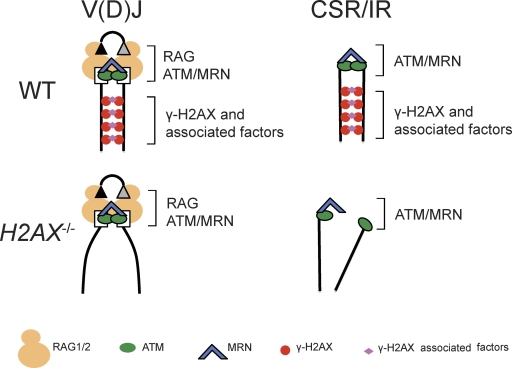Figure 6.
Models of H2AX function during end-joining repair of chromosomal DSBs. Schematic diagrams depicting the potential positional stability of broken chromosomal DNA strands during V(D)J recombination, CSR, or general DSB repair in G1-phase wild-type and H2AX-deficient cells. Boxes and triangle represent RAG-generated coding and signal ends, respectively. H2AX-mediated stabilization of broken DNA strands would be dispensable for end joining during V(D)J recombination as a result of DNA end stabilization by ATM/MRN and RAG postcleavage synaptic complexes. However, this H2AX function would be important for end joining during CSR and general DSB repair.

